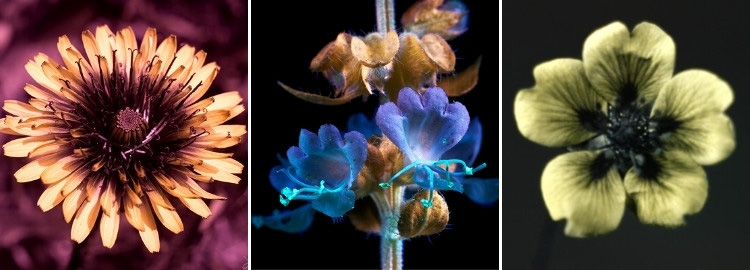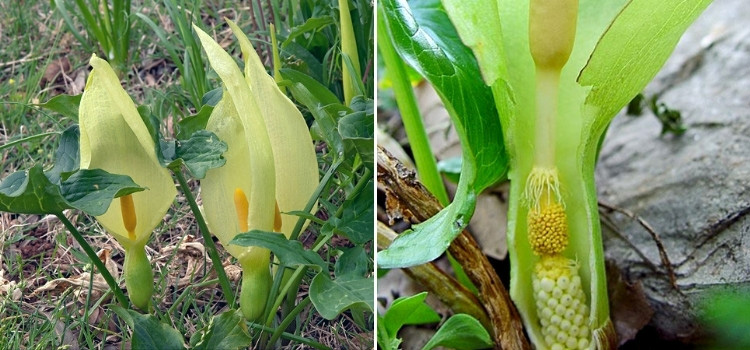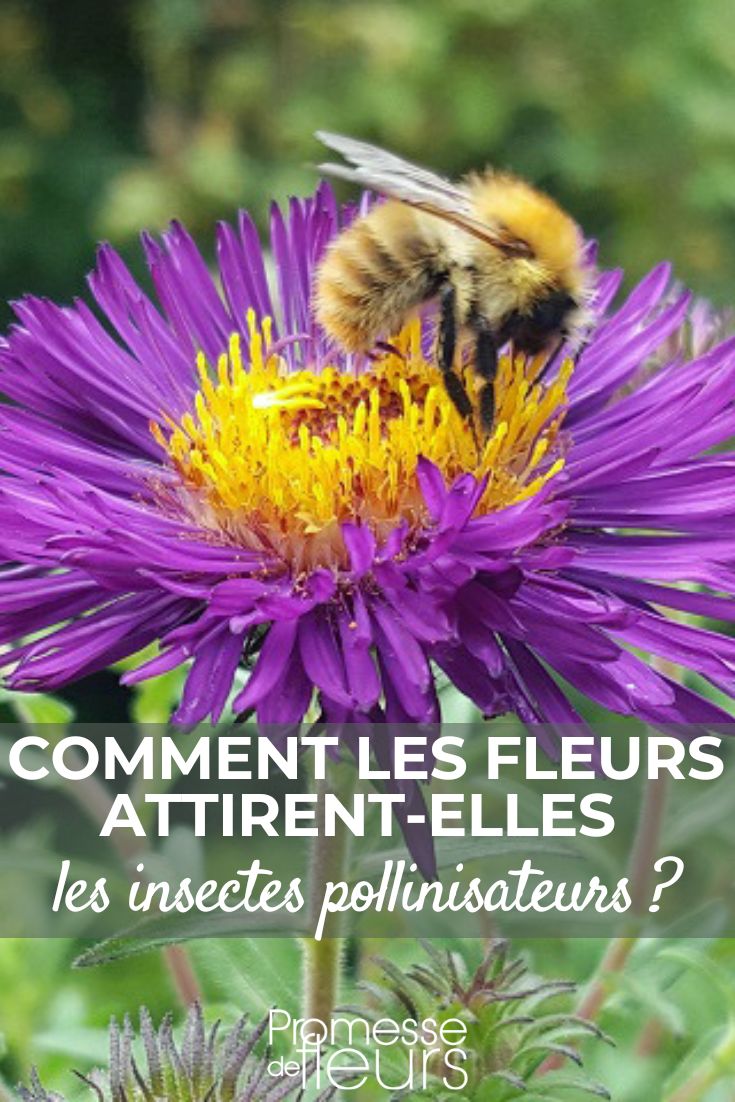To reproduce, plants need their pollen to be transported from one flower to another. Some of them use the wind for this: for example, grasses and conifers. These plants do not require colourful or fragrant flowers, as they do not need to attract insects. However, this technique is not very effective… Pollen flies in all directions, and only a tiny fraction will reach another flower of the same species. There are also plants that use water to transport pollen, while others are pollinated by birds (hummingbirds in tropical regions), bats, and certain rodents…
However, in our latitudes, most plants rely on insects for pollination, as this is probably the most effective technique. They call upon a wide variety of insects: bees, butterflies, flies, bumblebees, ladybirds, beetles, ants… Without them, many plants would disappear!
Plants are immobile and cannot go out and fetch insects themselves… but as you will see, they are incredibly ingenious in attracting them!

1- Scent and Nectar
Plants play on several fronts to attract insects: colours, scents, shapes… Their flowering stimulates the various senses of foraging insects.
Flowers attract insects from afar with their scents. Insects are very sensitive to smells, which they perceive through receptors on their antennae. These scents signal that the flower is ready to be pollinated and that nectar is available. The scent can also differ if the flower is young or old, providing insects with a clue about the amount of nectar. This way, they do not waste time visiting flowers that are not mature or are too old. Their goal is not to pollinate the flowers, but simply to feed! Pollen is an excellent source of nutrients for larvae, while nectar is rich in quick sugars.
Insects do not perceive scents in the same way we do. Some floral scents that escape our notice are very attractive to them. They quickly learn to associate the smell with the presence of nectar… But beware, some flowers are cunning and emit a scent without offering any nectar!
Flowers that bloom at night are often the most fragrant! At night, it is harder to see colours, so they rely on scent to be noticed. In fact, some flowers are more fragrant at night than during the day. The Four O'Clocks only open in the evening, releasing a pleasant fragrance and wilting in the morning, thus reserving their nectar for nocturnal insects.
Not all floral scents are pleasant. For example, Araceae emit an unpleasant odour, reminiscent of a corpse or rotting meat, to attract the flies that pollinate them (by mimicking their laying site)!
Interestingly, flowers pollinated by wind or birds do not have scents.
→ Pascale explains the differences between melliferous and nectariferous plants.
2- Colours and Ultraviolet
Insects do not perceive colours as we do! Most of them cannot see red, which appears black to them. They primarily distinguish yellow, purple, and blue.
Many insects are attracted to the colour yellow! This is why there are many yellow flowers: dandelions, daffodils, brooms, mimosas, sunflowers, chamomiles, St. John's worts… Similarly, the centre of flowers is often yellow! This colour is particularly attractive to dipterans (flies), especially hoverflies.
Purple and blue also attract insects. These shades can be found in many plants, such as lavender, cornflowers, muscari, periwinkles, delphiniums or borage.
Red, pink, and purple particularly attract butterflies.

Flowers that open at night are most often white and fragrant to be more visible in the dark. Some of these flowers close during the day and open in the evening, in order to reserve their nectar for nocturnal insects!
But beyond these colours, flowers bear ultraviolet patterns on their petals, near the centre of the flower. They are invisible to us, but not to insects like bees and bumblebees. These ultraviolet lines and spots act as signposts for them, helping them to find the centre of the flower more easily! This guides them to the nectar and pollen.

3- The Shape of Flowers and Their Arrangement
The shape of flowers varies greatly between species. Some plants have a few large, visible flowers, while others produce a multitude of small flowers grouped together.
Depending on their shape, they will attract different pollinators. For example, tubular flowers attract insects with long proboscises, like butterflies. They are capable of reaching the nectar that is deep within the flower's tube. Some flowers are even specially adapted to a single species of insect (which thus becomes their exclusive pollinator). Take the example of the Madagascar Star (Angraecum sesquipedale), which is an orchid with a very long floral tube (about 30 cm). When he discovered this flower, Darwin predicted the existence of a butterfly with a proboscis of that length… And he was right; 40 years later, this butterfly was indeed discovered!
Many flowers, like those in the Lamiaceae family, have a larger lower part that serves as a "landing strip" for insects, especially bees.
Finally, the clustering of flowers into inflorescences helps insects forage more efficiently. It is more convenient for them to quickly move from one flower to another when they are all close together.
4- Traps and Deceptions
When it comes to reproduction, some plants are willing to go to great lengths, even deceiving insects! Orchids are particularly skilled at this.
Take the example of the Ophrys orchids, which can create a true sexual lure. Their flowers mimic the female of the insect that often pollinates them, such as a bee or a bumblebee. They simultaneously release pheromones… Thus, males are attracted and attempt to mate with the flower. They leave, of course, loaded with pollen!
The Lady's Slipper is another orchid that traps insects. The bee is attracted by the colour and scent of the flower (pheromones). Once inside, it finds itself trapped in the lower petal shaped like a slipper and must follow a narrow path to exit. In doing so, it rubs against the pollen and takes it with it to deposit on another flower.

Araceae are also trap plants. Generally, their flowers smell bad, like rotting meat, to attract flies. In Arums, the flowers even produce heat, which enhances the diffusion of odours. In the centre of the inflorescence, the temperature can be more than 20 °C higher than the ambient air! Their inflorescences form a "floral chamber," in which flies become trapped. Once covered in pollen, they are released and can then go pollinate another flower.
Thus, in the face of insects, plants are not as passive as they seem! Although immobile, they are full of ingenuity to trap them and have them carry their precious pollen.

































Comments